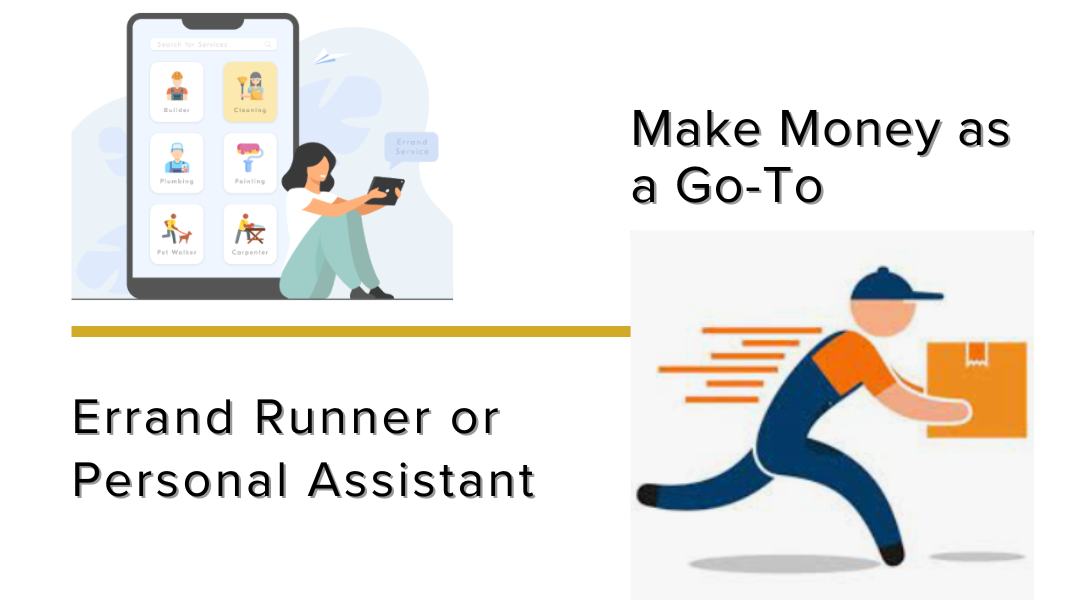Life moves fast, and for a lot of people, keeping up with everyday tasks feels impossible. Between work, family, and everything else, things slip through the cracks—which is where you come in. If you’re organized, reliable, and don’t mind being the person who gets things done, running errands or offering personal assistant services can be a surprisingly profitable side hustle (or even a full-time gig). No fancy certifications needed—just common sense, a good attitude, and the ability to show up on time.
1. Who’s Willing to Pay for This?
The best clients are the ones who either don’t have time or physically can’t do these tasks themselves. Think:
- Seniors – Grocery runs, pharmacy pickups, or even help organizing their homes.
- Busy parents – Last-minute school supply runs, returning online orders, or grabbing dinner when they’re stuck in back-to-back meetings.
- Professionals working long hours – Dropping off dry cleaning, waiting for a package delivery, or making sure their coffee stash is stocked.
Real-life example: After Jake started offering “Done in a Dash” errand services in his suburban neighborhood, he quickly picked up five regular clients—mostly working parents who needed someone to handle the little things they kept putting off. One mom referred him to three friends just because he always remembered to text her when her grocery order was at the door.
Pro move: Small touches matter. Bring the groceries inside instead of leaving them on the porch. Double-check that the pharmacy got the right prescription. Those extra five minutes turn one-time clients into regulars.
2. What Kind of Tasks Can You Handle?
Most requests are simple but time-consuming for the people hiring you. The key is bundling tasks smartly so you’re not wasting gas or time.
Top requests:
- Grocery shopping (bonus if you can compare prices or pick the best produce)
- Pharmacy or post office runs
- Returning packages or waiting for home deliveries
- Airport pickups/drop-offs for rideshare-restricted areas
- “Emergency” errands (e.g., grabbing a kid’s forgotten lunchbox before school)
Smart strategy: Offer a “Same-Zone Discount”—if you’re already hitting the Target near Client A, let Client B know you can swing by for their return at a lower rate since you’re in the area.
Real-life example: Priya partnered with two local small businesses to handle their weekly bank deposits and supply runs. She charged a flat $80/week and structured her route so everything was done in under two hours.
3. Pricing That Works (Without Burning You Out)
Charge too little, and you’ll resent the work. Charge too much, and clients will DIY it. Here’s the sweet spot:
- By the hour: $25–$40 (depending on your area) for multi-stop outings.
- Per task: $15 for quick drop-offs, $30 for a full grocery trip.
- Subscription style: “5 errands/month for $150” for predictable income.
Time-saving tips:
- Cluster errands in the same part of town.
- Use a separate Google Maps list for frequent stops.
- Send quick updates like, “Got your package—dropping it off in 20.” Clients love the peace of mind.
Real-life example: Marcus used a basic spreadsheet to track his mileage and receipts, which saved him hundreds at tax time. By batching similar tasks (all pharmacy runs on Tuesday afternoons, all grocery orders Wednesday mornings), he cleared $1,200/month working part-time.
Why This Works Long-Term
You’re not just a courier—you’re giving people back their most valuable resource: time. The mom who doesn’t have to drag three kids through the supermarket, the elderly man who can’t stand in a long pharmacy line, the freelancer who’s on deadline and forgot to mail a contract—they’ll all pay gladly for someone trustworthy to handle it.
Bottom line: Start small, focus on being ridiculously reliable, and word will spread. Before long, you’ll have more requests than you can handle—and the freedom to raise your rates.
